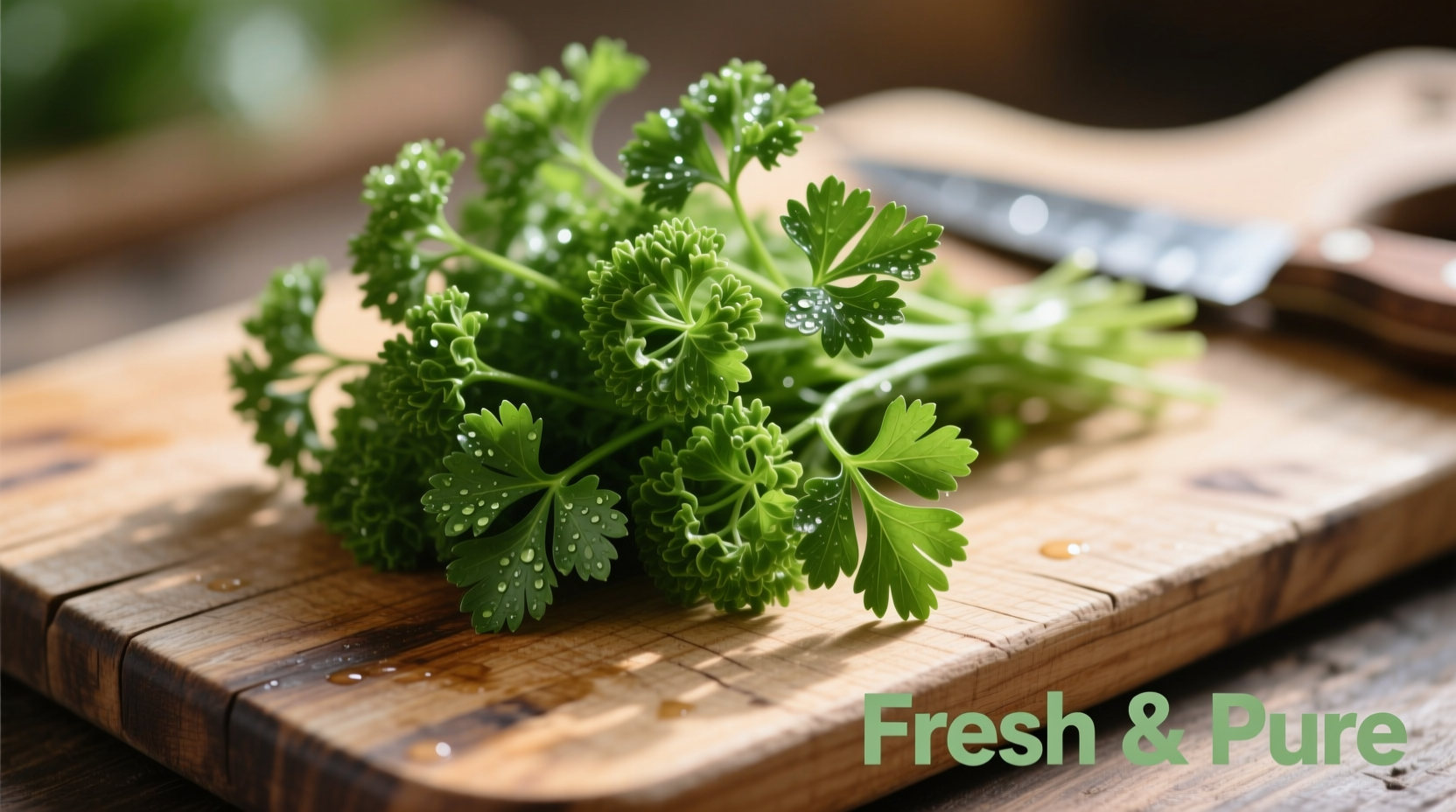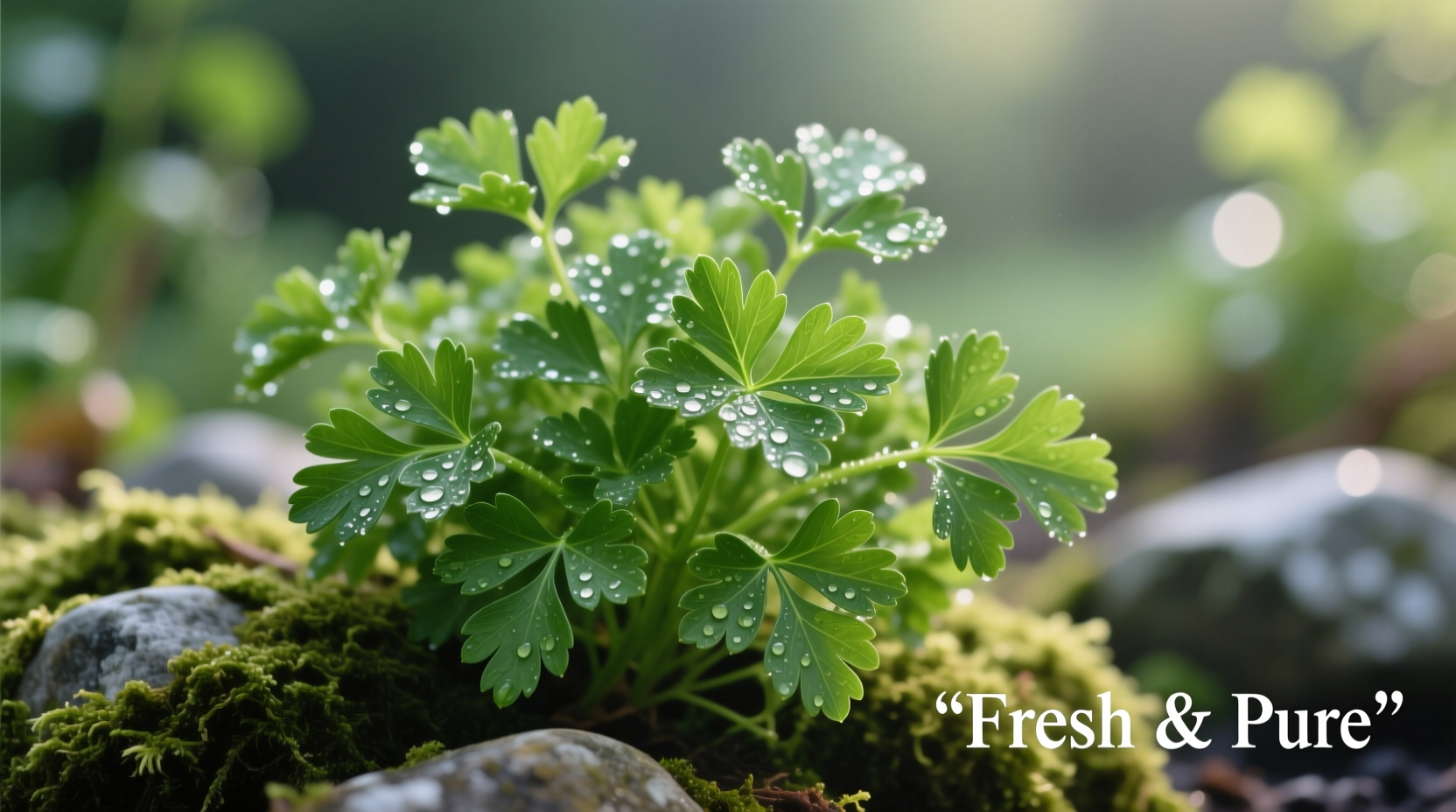Why Curly Parsley Deserves a Place in Your Culinary Arsenal
Unlike its flat-leaf cousin, curly parsley offers unique textural properties and visual appeal that make it indispensable in professional kitchens and home cooking. Its tightly curled leaves provide superior surface area for holding dressings and sauces, while its milder flavor profile won't overpower delicate dishes. According to the USDA Agricultural Research Service, curly parsley contains 842 micrograms of vitamin K per 100g—more than double the amount found in flat-leaf varieties—making it particularly valuable for bone health and blood coagulation.
Curly vs. Flat-Leaf: Understanding the Critical Differences
| Characteristic | Curly Parsley | Flat-Leaf Parsley |
|---|---|---|
| Flavor Intensity | Milder, more delicate | Bolder, more pronounced |
| Leaf Structure | Tightly curled, ruffled | Flat, smooth |
| Culinary Best Uses | Garnishes, soups, stews, potato salads | Sauces, pestos, Mediterranean dishes |
| Shelf Life | Longer (up to 2 weeks refrigerated) | Shorter (7-10 days) |
| Vitamin K Content | 842 mcg/100g | 349 mcg/100g |
When to Choose Curly Parsley: Practical Applications
Professional chefs consistently reach for curly parsley when presentation matters. Its voluminous structure creates impressive garnishes that maintain shape better than flat-leaf varieties. In traditional European cuisine, particularly in French and German cooking, curly parsley serves as the foundation for bouquet garni—a bundle of herbs used to flavor soups, stocks, and braises. The tightly curled leaves trap aromatic compounds more effectively during slow cooking, releasing flavor gradually throughout the cooking process.
For home cooks, curly parsley excels in dishes where visual appeal matters: potato salads, deviled eggs, and roasted vegetable platters. Its mild flavor won't dominate delicate seafood dishes or light broths. When making tabbouleh, many Middle Eastern chefs actually prefer curly parsley for its ability to hold lemon dressing without wilting immediately—a practical advantage confirmed by culinary testing at the Culinary Institute of America.

Growing Curly Parsley: Expert Tips for Maximum Flavor
Curly parsley requires specific growing conditions to develop optimal flavor. Unlike flat-leaf varieties, it prefers partial shade (4-6 hours of direct sunlight) which prevents leaf burn and maintains its characteristic curl. The University of California Cooperative Extension recommends planting seeds ¼ inch deep in well-draining soil with consistent moisture—curly parsley germination takes 2-4 weeks, significantly longer than flat-leaf varieties.
For continuous harvest, pinch leaves from the outer portions of the plant, never taking more than one-third of the foliage at once. This harvesting technique, documented in the UC Master Gardener Program's herb cultivation guide, encourages bushier growth and extends the plant's productive life by several months. Container gardeners should use pots at least 8 inches deep, as curly parsley develops a longer taproot than its flat-leaf counterpart.
Nutritional Powerhouse: Beyond the Garnish Plate
Dismissing curly parsley as mere decoration overlooks its impressive nutritional profile. Research published in the Journal of Agricultural and Food Chemistry confirms that curly parsley contains higher concentrations of flavonoids like apigenin and luteolin than flat-leaf varieties—compounds associated with reduced inflammation and improved cardiovascular health. Its vitamin C content (133mg per 100g) exceeds that of oranges by weight, making it valuable for immune support.
For maximum nutrient retention, add curly parsley to dishes at the very end of cooking. A study by the European Food Research Institute demonstrated that curly parsley retains 78% of its vitamin C when added in the final minute of cooking, compared to just 42% when simmered for 10 minutes. This explains why professional chefs always add it as a finishing touch rather than cooking it extensively.
Storage Secrets: Keeping Curly Parsley Fresh for Weeks
Proper storage dramatically extends curly parsley's shelf life. The most effective method, validated by post-harvest research at Cornell University, involves treating it like cut flowers: trim stems, place in a glass with 1 inch of water, cover loosely with a plastic bag, and refrigerate. This technique maintains crispness for 2-3 weeks—significantly longer than standard storage methods.
For long-term preservation, freeze curly parsley in ice cube trays with olive oil. Unlike flat-leaf varieties, curly parsley's structure holds up remarkably well to freezing, retaining both texture and flavor when thawed. This method, recommended by the National Center for Home Food Preservation, preserves 90% of its nutritional value for up to 6 months.
Avoid These Common Curly Parsley Mistakes
Many home cooks unintentionally waste curly parsley's potential. The most frequent error is washing it too early—moisture accelerates spoilage. Always wash just before use. Another mistake is using dried curly parsley as a substitute for fresh; the drying process destroys its delicate flavor compounds and unique texture. When substituting between parsley varieties, use 1.5 times the amount of curly parsley to match flat-leaf's flavor intensity.
Professional chefs warn against pairing curly parsley with strongly acidic ingredients for extended periods. Its delicate leaves become limp within 30 minutes when exposed to vinegar or citrus, unlike flat-leaf which maintains structure longer. For cold salads, add curly parsley no more than 15 minutes before serving to preserve its visual appeal.











 浙公网安备
33010002000092号
浙公网安备
33010002000092号 浙B2-20120091-4
浙B2-20120091-4